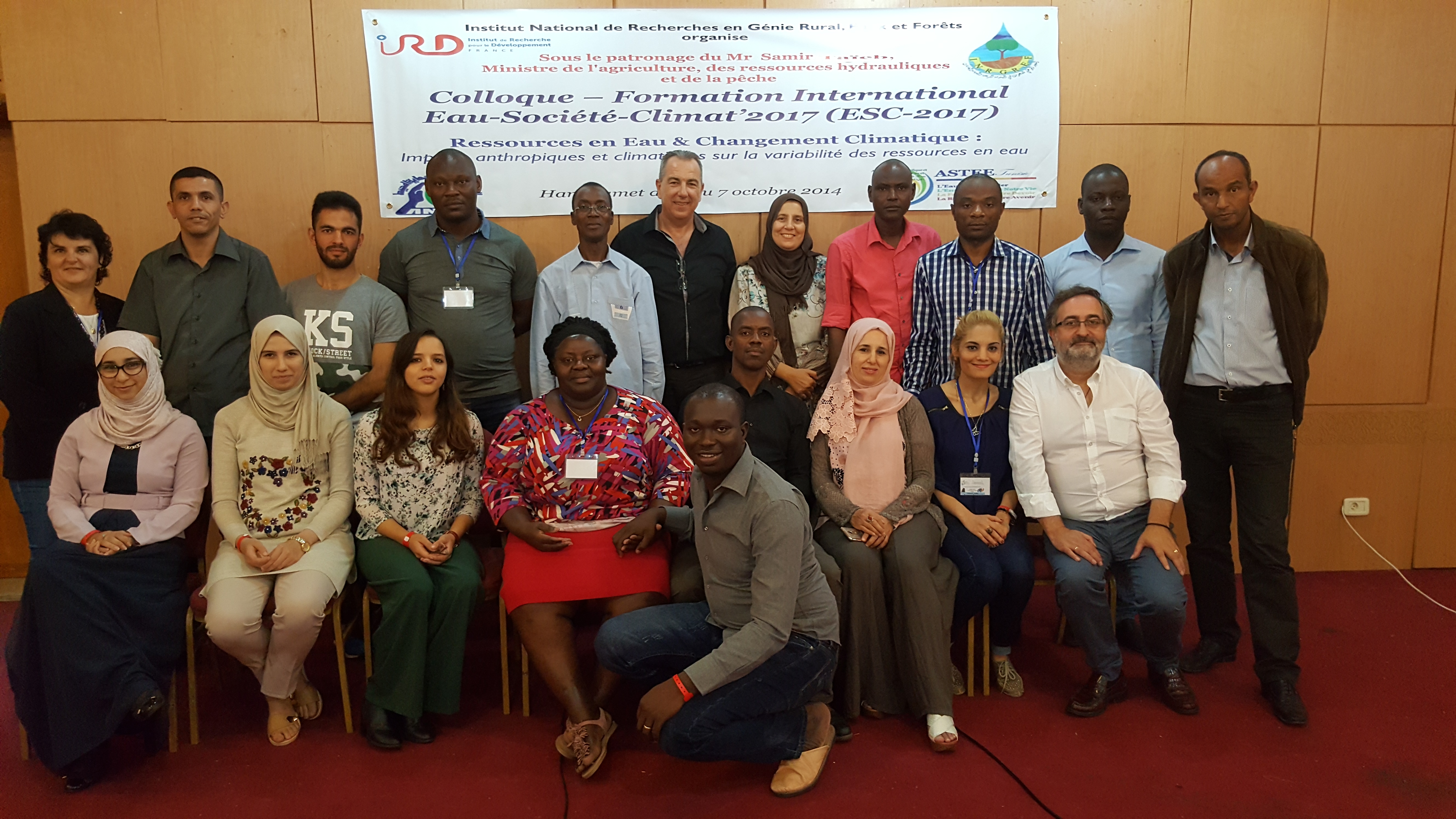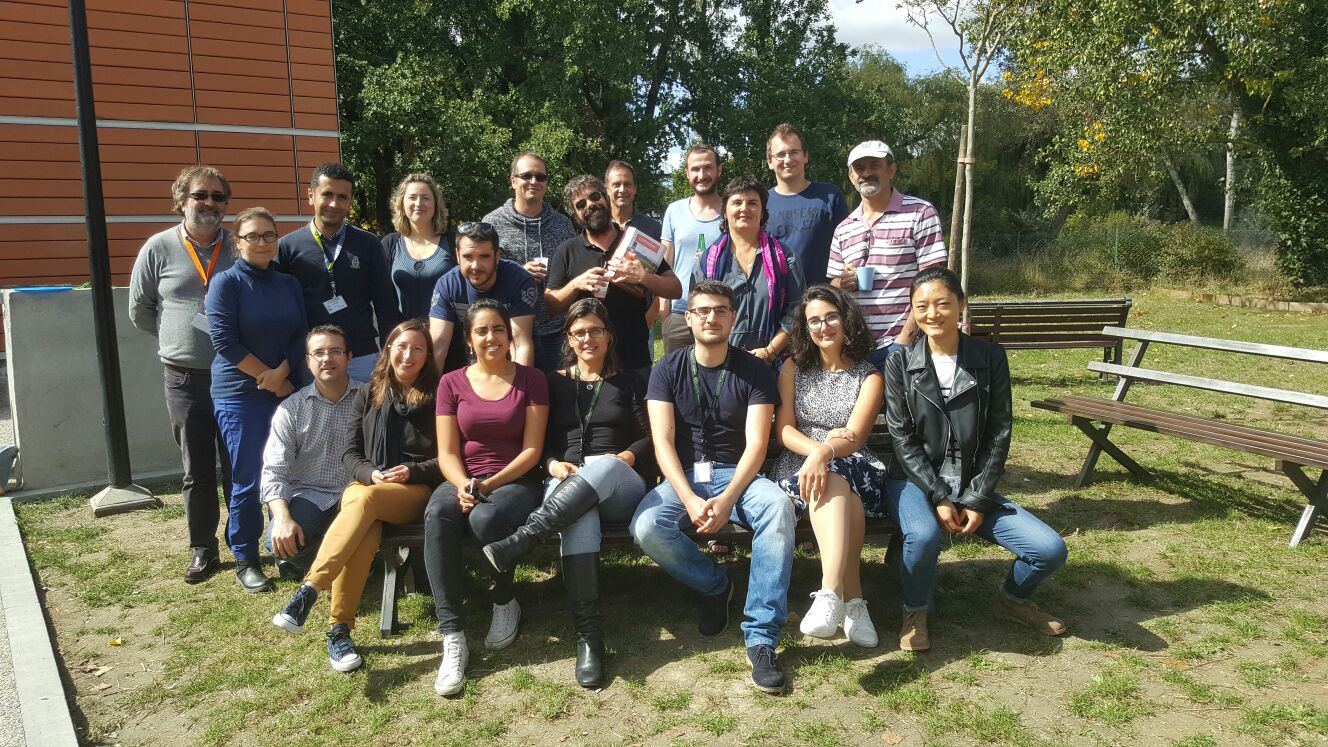News
AGU Fall Meeting - Chicago, IL & Online - 12-16 Dec. 2022
1 July 2022
Since 2016, this modeling session has been initiated to provide broad discussions among international scientists from different disciplines. Specifically, contributions from the SWAT community are fruitful with great success. We hope mutual efforts in this session can advocate advanced insights for future investigation on both modeling development and the associated management strategies along with interactions from the government authorities. See you in Chicago!
2021 AGU Fall Meeting
24 June 2021
The 2021 AGU Fall Meeting in New Orleans, LA will take place 13-17 December. We would like to bring the following session to your attention:
Since 2016, this modeling session has been initiated to provide broad discussions among international scientists from different disciplines. Specifically, contributions from the SWAT community are fruitful with great success. We hope mutual efforts in this session can advocate advanced insights for future investigation on both modeling development and the associated management strategies.
2020 AGU Fall Meeting
1 July 2020
The 2020 AGU Fall Meeting in San Francisco, CA will take place 7-11 December. We would like to bring the following session to your attention:
H016 - Advances in Watershed Modeling: Hydrologic & Nutrient Processes, Conservation Management, Food Production, Energy Consumption and Model Coupling
Haw Yen (Texas A&M University), Jeffrey G Arnold (USDA-ARS), Wei Ouyang (Beijing Normal University), and Yongping Yuan (USEPA)
This is the 5th year (since 2016) that we have a watershed modeling session in the AGU Fall Meetings. The proposed session has been a very successful platform for discussions in challenging environmental modeling subjects. The meetings will be conducted mostly virtually (due to COVID-19) and the corresponding registration fee is 50% off than regular rate. The deadline of abstract submission this year is July 29 and we hope to make it more visible in the SWAT community.
2019 AGU Fall Meeting
18 June 2019
The 2019 AGU Fall Meeting in San Francisco, CA will take place 9-13 December. We would like to bring the following session to your attention:
- Advances in Watershed Modeling: Hydrologic & Nutrient Processes, Conservation Management and Model Coupling
Haw Yen (Texas A & M University), Jeffrey G Arnold (USDA-ARS), Chiyuan Miao (Beijing Normal University), and Yongping Yuan (USEPA)
The deadline to submit an abstract is July 31.
SWAT Workshop in Kenitra, Morocco
17 December 2018
José-Miguel Snchez-Pérez (CNRS, France) and Sabine Sauvage (CNRS, France) helped conduct a beginner SWAT workshop at the Université Ibn Tofail, Faculté des Sciences in Kenitra, Morocco, the 11-14th of December 2018.
VACI2019
10 December 2018
Join us for a special SWAT session at the Vietnam International Water Week (VACI2019) in Hanoi the 22nd - 25th of March. Read the flyer for more information.
Submit an abstract by 1 January 2019. Download the abstract template.
2018 AGU Fall Meeting - Applications of SWAT and other watershed simulation models
1 October 2018
The 2018 AGU Fall Meeting in Washington, D.C. will take place 10-14 December. We would like to bring the following sessions to your attention.
- Advances in Watershed Modeling: Hydrologic/Nutrient Processes, Conservation Management and Model Integration
Haw Yen, Aleksey Sheshukov, Abeyou W. Worqlul, and Jeffrey G. Arnold - Droughts and Water Challenges in Changing Environment
Panagiotis D. Oikonomou, Haw Yen, Bradley H. Udall, Reagan M. Waskom - Coupled terrestrial-aquatic approaches promote watershed-scale sustainability connecting people and water
Xuesong Zhang, Jaehak Jeong, Gregory W. McCarty, and Ryan Bailey - Water for Food: Enhancing Food Security in Developing World through Improved Agricultural Water Management
Hua Xie, Raghavan Srinivasan, Marc A Jeuland, Liangzhi You
Call for Abstracts
10 September 2018
An integrated modeling workshop, sponsored by Cornell University and Iowa State University, will be held at the David R Atkinson Center, Cornell University, Ithaca, NY during April 3-5, 2019. The workshop organizers are Dave Keiser (Iowa State University), Cathy Kling (Cornell University) and Dan Phaneuf (University of Wisconsin, Madison). Abstracts are being solicited that describe integration of the Soil and Water Assessment Tool (SWAT), Agricultural Policy/Environmental eXtender (APEX) and/or other ecohydrological or environmental models, with economic models or other types of models. Accepted abstracts will also be considered for a special issue of Land Economics. Additional details regarding the topics of interest and abstract submission process.
SWAT training, communicate, from 5-7 October 2017, Hammamet, Tunisie
5 October 2017
From 5th to 7th October 2017, a SWAT training given by Dr José-Miguel Sanchez-Pérez (CNRS, Toulouse, France), Dr Sabine Sauvage (CNRS, Toulouse, France), Dr Didier Orange (IRD, Montpellier, France) and PhD Walid Ben Khélifa (INRGREF, Tunis, Tunisie), on “Introductory SWAT Course” has been delivered for 16 researchers, students and engineers as side-event of the international seminar “Colloque-Formation international Eau-Société-Climat’2017” (ESC-2017), organized by Prof. Noureddine Gaaloul (INRGREF, Tunis, Tunisia) at Hammamet, Tunis (Tunisia) from 2nd to 7th October, co-funding by PHI-UNESCO (FRIEND-Water network), INRGREF, IRESA and IRD, with the key support from ASTEE-Tunisie.
During the SWAT training, 8 countries from West Africa were represented (Algeria, Benin, Burkina Faso, Cameroun, Ivory Coast, Morocco, Niger and Tunisia), 20% from Maghreb (Algeria, Morocco, Tunisia). This international cooperation South-South-North has opened a large numbers of research opportunities on River Basin Management, Hydrology and Ecohydrology.

SWAT Course for SUDOE Territory
26 September 2017
CNRS in Toulouse, France under the European project INTERREG SUDOE VB AGUAMOD, is hosting a training course taught by Professor Karim Abbaspour of EAWAG (SWITZERLAND) from the 25-27 of September. The course focuses on the use of SWAT-CUP tools for self-calibration and analysis of uncertainties around the SWAT model. The partners of the project will be meeting all week to work on the modeling of the French, Spanish and Portuguese watersheds of the SUDOE territory. Throughout the week, the partners will discuss the technical aspects and progress in the modeling projects of the SUDOE territory.
